Information of Fence
Important Point
The fence is the most essential part of the garden of our house which helps us to keep secure our home from animals and acts as a boundary of our house.
So, it is very important to select the best type of fence style for your home which is durable and strong enough to keep your home safe and secure. There are various types of Fences are available in the market and it is very difficult and confusing to choose the best one for your house.
You may have a question in your mind that how far apart should fence posts be? So, here in this article, we will help you to select the best fence for your home and the perfect spacing so that you can install one of the best quality Fences for your house which keeps your property safe and secure.
What is a Fence?
A fence can be defined as a structure that is erected at the exterior side of our land which forms an enclosed boundary structure. The fencing is one of the most essential things which keeps our house safe and secure.
The fence is constructed by inserting posts in the ground which are connected with the help of rails or boards.
Also, read: Tension Vs Compression | What Is Tension & Compression
What is Fence Post?
Fencing post is a vertical element that is used in the construction of the fence which helps the fencing to stand in the vertical position. The fence post is made up of concrete, wood or steel, etc. Fencing posts are inserted into the ground in an accurate horizontal line.
There are various creative shape fence posts are also available in the market. These fancy types of fence posts when used in the gardens, will enhance the beauty of the structure.
Concrete and wood are widely used materials in the manufacturing of fence posts. Fence posts act as a support to the fences and help to withstand in high winds and aggressive environmental conditions.
The fence posts are installed on the ground and fixed with the help of concrete so that they can withstand and cannot be collapsed. The mix of crushed gravel and soil is used to backfill the hole around the fence post.
Useful Article for You
- What Is a Contour Interval
- What Is Tile
- What Is the Difference Between a Shower Pan and a Shower Base?
- What Is a Window Panel
- Type of Arch
- What Is a Frame Structure
- What Is the Measurement for a Queen Size Bed
- What Is Considered Livable Space
- What Is One Way You Can Save Electricity?
- What Is Mdf Mean
- What Is a Bundle of Shingles
- What Is a Gallon of Water Weigh
- What Is SuperelevationWhat Is Overhang
- What Is Sand Blasting
- What Is a Span Bridge
- What Is the Little Black Diamond on a Tape Measure
- What Is a Louvered Door
- What Is a Spread Footing
- What Is Leveling
- Different Types of Beam
- What Is Pedestal
- What Is Plumbing Fixtures
- What Is Slab Construction
- What Is Calacatta Quartz
- What Is Auxiliary View
- Sheepsfoot Roller
- Rcc Rates
- Live Load Vs Dead Load
- What Is 1 Flight of Stairs
- What Is Refractory Cement
- What Is Luminous Flux Vs Lumens
- What Is a Frost Wall
- What Is an Undercoat
- What Is Road Pavement
- Arch Foundation
- What Is a Stair Landing
- What Is Stone Masonry
- What Is a Spandrel Beam
- What Is Pier and Beam Foundation
- What Is Levelling
- What Is a Pile Cap
- What Is a Mat Foundation
- What Is a Floating Slab
- What Is the Purpose of Foundation
- What Is Modulus of Rupture
- What Is a Flush Door
- What Is Residential Construction
- What Is the Best Foundation for a House
- What Is Oblique Drawing
- What Is a Benchmark in Surveying
- What Is a Engineering Drawing
- What Is an Admixture
- What Is a Monolithic Slab Foundation
- What Is the Standard Size Water Supply Line
- What Is the Difference Between Tension and Compression?
- What Is a Tremie
- What Is Tributary Area
- What Is Shoring Construction
- What Is a Cason
- What Is Wall Putty
- What Is the Difference Between Mortar and Concrete
- What Is Bhk
- What Is Sbc of Soil
- What Is Plinth Level
- What Is Water Proofing
- What Is Mix Design of Concrete
- What Is Fine Aggregate
- What Is Retention Money
- What Is Design Mix
- What Is Isometric Scale
- What Is Development Length
- What Is Superelevation
- What Is Wall Made Of
- What Is Micro Piling
- What Is Soil Stack
- What Is a Half Wall Called
- What Is Flagstone
- What Is a Cinder Block
- What Is Plinth
- What Is Floors
- What Is Centering in Construction
- What Is the Cost of 1 Bag Cement
- What Is a Drop Manhole
- What Is the Top of a Column Called
Purpose of Fencing
There is the various purpose for which Fence used are as follows.
1. It Provides Safety
The fence provides safety to your home from the animals and restricts them to enter your house. It also provides you safety from thefts and secures your property.
2. Fence Helps to Establish the Boundaries
The land without having a fence is very difficult to identify its boundaries. The fence is used as a boundary of our plot which gives us the authority and the ownership of our land. The fence acts as a line that separates the property from each other.
3. It Provides Privacy
The yard of our home is the best place where one can get relax, so people want to achieve privacy in their yard. The Fence is an ideal solution that provides you privacy so that you can enjoy in your home yard. So that’s why privacy is one of the main reasons for installing a fence.
4. The Fence Provides Security to the Property
A fence will prevent the entry of unknown people into your property so that you can stay safe and secure in your house. Fence also helps to keep your children inside the yard and restricts them to go outside.
5. To Enhance the Aesthetics of Your Home
Fences are the best way to improve the aesthetical beauty of your structure. The fences are available in various types of designs and shapes which increase the curb appeal of your home. A fence with good privacy and security aspects with the best designs will increase the value of your home.
Also, read: Bolt Vs Screw | What Is Bolt | What Is Screws
Types of Fences
There are numerous fences are available in the market based on the materials which are as follows.
- Wood Fence
- Aluminum fence
- PVC Fence
- Wrought Iron Fence
- Electric fence
- Bamboo Farm fence
- Vinyl Fence
How Far Apart Should Fence Posts Be?
- After selecting the right material for fencing your house then the second most important part is to decide the perfect spacing for fence. Post spacing provides the framework to the perimeter of your land where you have to install fencing.
- So, what do you think how far apart should fence posts be? The spacing between the fence posts is important because it is directly connected to the strength and stability of the fencing.
- The posts of the fencing must be installed at a proper distance so that the fencing should remain strong and stable and get installed within the minimum cost.
- While installation of the fence posts you also have to give attention to the economy. If you installed the fence posts at a great distance apart from each other than the number of posts required is less but it will reduce the integral strength of the fencing and there may be chances of collapsing the fence. And if you reduce the distance between the fence posts then the number of posts required is more and it will increase the total cost required for the installation of the fence posts. This will also look very strange.
- So, the fence posts must be placed at an optimum distance such that the strength and stability of the fencing should be achieved within the minimum cost.
- There is a one-thumb rule to decide how far to spacefence posts while the installation of a fence. The wood fence post spacing depends upon the type of fence posts you are using.
- So, the ideal spacing between the fence posts ranges from 8 feet up to 10 feet. This distance is optimum for placing the fence posts which also provides additional strength and safety to the fencing and reduces the maintenance cost.
Here we have given a range of distance for different types of fences which are available in the market which are as follows
| Type of Fencing | Spacing Between Fence Posts |
| Welded wire fencing | 08-12 feet |
| Field type fencing | 08-12 feet |
| Deer and orchard fencing | 15-20 feet |
| Deer and wildlife fencing | 15-20 feet |
| HT barbed wire fencing | 20-30 feet |
| HT smooth wire fencing | 20-30 feet |
| Sheep and goat fencing | 08-12 feet |
| Welded fencing | 08-12 feet |
| Yard, garden and kennel fencing | 08-12 feet |
| Barbed fencing | 08-12 feet |
- If you have to install the fencing for the temporary purpose then the widely spaced fence posts are the best option which you can opt that also requires less cost for installation as the number of fence posts are less.
Also, read: What Is Rebar | Why use Reinforcement in Concrete | Types of Steel Reinforcement Bars
Useful Article for You
- Zero Force Members
- How Much Does a Yard of Concrete Weigh
- Cmu Wall Meaning
- Gradient Road
- Budget Sunroom Ideas
- Types of Vaulted Ceilings
- Well Points
- How Does Baking Soda Remove Blood from Carpet
- What Are Forms in Construction
- How Heavy Is Dirt
- Tender Meaning in Architecture
- Dark Olive Green House
- Cast in Place Concrete
- Lean to Roof
- How Tall Is an Average Door
- Grade Beam Foundation
- Window Sill Height
- Concrete Cold Joint
- Types of Traps
- Types of Pipe
- Wood Supporting Beams
- Home Depot Scrap Wood
- Lvl Beam Size Calculator
- Structural Shell
- Curb Types
- Msand
- Optimum Dry Meaning
- Disadvantages of Low-E Glass
- Bridge Abutment Definition
- Composite Masonry Wall
- Is Cedar a Hardwood or Softwood
- Modified Proctor Test
- Physical Properties of Sand
- Sugar in Concrete
- Crane Machine Construction
- Types of Gable Roofs
- Door Frame Types
- How Much Does 55 Gallons of Oil Weigh
- Dog Leg Stairs
- Concrete Salt Finish
- Westpoint Bridge Builders
- Types of Porches
- Roof Pitch Types
- Types of Weirs
- Asphalt Floor
- Dutch Roof
- #6 Rebar Weight Per Foot
- Prizmatic Compass
- Bond Break Concrete
- Poured Concrete Wall Cost Calculator
- How Many 60 Lb Bags of Concrete in a Yard
- Wood Fence Post Spacing Chart
- Falsework
- Design of Building Structures
- Topping Slab
- Types of Cinder Blocks
- Fresh Concrete
- Door Colors for Red Brick House
- Foundation Spalling
- Clear Cover Concrete
- Tiles Brand
- Cement Consumption in Plaster
- Aggregate Density Kg M3
- Load Bearing Wall Construction
- Weight of Concrete Slab Calculator
- Is Clay Smaller Than Silt
- How to Calculate Dead Load
- Bad Concrete Work
- Stepped Foundations
- Residential Construction Cost Estimator Excel
- Different Construction Trucks
- Septic Pump Replacement Cost
- What Is Rcc Value Day
- What Is a Highway Flyover
- Tie Beam Concrete
- Cyclonic Precipitation
- M30 Concrete Ratio
- Top 20 Pvc Pipe Brands in India
- Footing Vs Foundation
- Parts of an Arch
Factors Affecting Distance Between the Fence Posts
There are various factors which impact to decide the spacing between fence posts are as
1. Weight of the Fencing Material
The spacing between the fence posts depends upon how heavy the fence is which you are using. If you are using heavy fencing material then the spacing between the fence posts should be kept minimum and if the fencing material is lightweight then the fence posts spacing can be kept at a larger distance from each other.
2. Topography of the Land
The terrain of the land where you have to install fencing impact the spacing between the fence posts.
3. Nature and Usage of the Area
The area where you want to fencing also affects the spacing between the fence posts. If the fencing is to be done for the animals, then the fence posts should be closely spaced so that it will restricts the tension of the animals against the fence.
4. Type of Soil
The ground conditions and the type of soil available affects the spacing between the posts. If the area where you want to fencing have black cotton soil then the fence posts should be installed at a greater depth and closed each other so that the fence posts will not undergoes any movement. The soils which have low bearing capacity requires larger length of fence posts so that it can be installed at a greater depth.
5. Strength of the Fence Posts
The spacing between the fence post can be increased if you use high strength fence posts such as concrete fence posts or steel fence posts. For the high strength fence posts, you can place the fence posts up to 15 feet from each other.
Also, read: What Is Bar Bending Schedule | Preparation as Per Bs 4466 | Tolerances as Per Bs 4466
How Many Fence Posts Are Required for Installation of Fencing?
The calculation of the number of posts required to fencing is very simple and easy.
Let us understand this by taking one example, consider a land of rectangular shape having 100 feet length and 200 feet breadth. Then calculate the perimeter of the land by using following formula
- Perimeter of rectangular land = 2 (L+B)
- Perimeter of rectangular land = 2(100+200)
- Perimeter of rectangular land = 2x 300
- Perimeter of rectangular land = 600 feet
Then divide the total perimeter of the land with the spacing of the fence posts which you are using for your land. Let us take, you placing the fence posts at a distance of 10 feet.
- Number of posts required for fencing = (Perimeter of land/Spacing between the fence posts)
- Number of posts required for fencing = (600/ 100)
- Number of posts required for fencing = 60 nos
There is a total 60 number of fence posts are required for fencing the rectangular land. In this way you can also easily calculate the number of fence posts which are required for your land.
Conclusion of Fence Posts
So, we hope that you have got the answer to your question about how far between fence posts. The standard fence post spacing which is generally used ranges between 8 to 12 feet.
Also, Read: 38 Types of Wood | What Is Wood | Significance of Utilizing Wood in Construction
Fence Posts
Dig post hole so diameter of the hole is 3 times the width of the post (i.e., the hole for a 4” wood post should be about 12 inches wide). The depth of the hole should be 1/3-1/2 the post height above ground (i.e., a 6-foot tall fence would require a hole depth of at least 2 feet).
Removing Chain Link Fence
Step 1: Remove Clamps from Corner Post. Remove the Clamps from One of the Corner or End Posts One End at a Time.
Step 2: Cut Fence Ties and Detach the Chain Link. Next, Cut the Wire Fence Ties or Metal Strapping That Holds the Chain Link Fence to the Top Rail.
Step 3: Remove the Fence Posts.
Wire Fence with Wood Posts
And hammer galvanized staples every three inches to secure the mesh to the top rail. When you reach the next post pull the mesh taut. And staple the mesh vertically to the post. Every six inches.
Post and Wire Fence Construction
Use the height of your wire fencing to mark the bottom. Rail. Then cut the notches on each post using a circular saw and chisel pour six inches of drainage stone into the bottom of each hole and tamp.
Post and Dowel Fence
This string line is going to be what we line up the fence onto to keep it straight then once you find that just put in a mistake tie. On a string.
Post and Rail Gate
And our thickness. And do some calculations against the length of the overall gate. Making an assumption for the overall tenon and mortise overlap within the posts and the rails.
Cable Railing Posts
Unless homeowners are using additional support, posts should be no further than 4-feet apart. This is done to ensure cables do not deflect or bow under cable tension loads. By placing posts 4-feet apart homeowners ensure their cables will still meet the 4-inch sphere rule.
Diy Cable Railing with Wood Posts
A great way to get your cable railing system in a cost-effective. Way is to use wood posts. And the cable as the infill.
Leaning Fence Post
If your post is rocking around inside of its concrete footing, a good solution is a steel wedge. These can be driven between the post and concrete footing to straighten a leaning or wobbly post.
French Gothic Fence Post
Redwood is one of the most widely used wood types for wooden fencing. It is expensive, but it more than compensates for its price with durability, quality, and beauty. It is naturally resistant to rot and insects. It is therefore considered the best wood for fencing.
Fence Post Spacing
Distance between fence posts can be spaced 8 to 12 feet apart. While this is a general criteria, it doesn’t cover all scenarios. For instance, high tensile fence can have larger spacing, requiring line posts every 15 to 20 feet for field fence styles, and as much as 20-30 feet for high tensile barbed and smooth wire.
Chain Link Fence Post Spacing
As chain link fence posts are smaller and sturdier than many other types, the holes should be smaller and can be farther apart. Follow the fence manufacturer’s instructions for spacing, which typically ranges from 4-10′ apart spacing should not exceed 10′ on-center.
Fence Post Spacing Chart
Here, post spacing for fence are as follows.
| Space | Set Post Apart |
| 30 ft. | 10 ft. |
| 31 ft. | 7.75 ft. |
| 32 ft. | 8 ft. |
| 33 ft. | 8.15 ft. |
| 34 ft. | 8.5 ft. |
| 35 ft. | 8.75 ft. |
| 36 ft. | 9 ft. |
| 37 ft. | 9.15 ft. |
| 38 ft. | 9.5 ft. |
| 40 ft. | 10 ft. |
| 41 ft. | 8.17 ft. |
| 42 ft. | 8.42 ft. |
| 43 ft. | 8.5 ft. |
| 44 ft. | 8.75 ft. |
| 45 ft. | 9 ft. |
| 46 ft. | 9.17 ft. |
| 47 ft. | 9.42 ft. |
| 48 ft. | 9.58 ft. |
| 49 ft. | 9.75 ft. |
| 50 ft. | 10 ft. |
Chain Link Fence Post Spacing Chart
Here, Standard fence post spacing are as follows.
| Distance Between terminal posts | Distance betwwn line post |
| 30 ft. | 10 ft. |
| 31 ft. | 7.75 ft. |
| 32 ft. | 8 ft. |
| 33 ft. | 8.15 ft. |
| 34 ft. | 8.5 ft. |
| 35 ft. | 8.75 ft. |
| 36 ft. | 9 ft. |
| 37 ft. | 9.15 ft. |
| 38 ft. | 9.5 ft. |
| 40 ft. | 10 ft. |
| 41 ft. | 8.17 ft. |
| 42 ft. | 8.42 ft. |
| 43 ft. | 8.5 ft. |
| 44 ft. | 8.75 ft. |
| 45 ft. | 9 ft. |
How Far Apart Should Fence Posts Be?
Apart from fence posts can be spaced 8 to 12 feet apart. While this is a general criterion, it doesn’t cover all scenarios.
How Far Apart Are Fence Posts?
Fence posts should be set six to eight feet apart on a 6 foot wood fence. Do not go beyond eight feet or the fence may not be stable enough.
How Far Apart Do You Put Fence Posts?
Too far apart and the strength of your fence is compromised; too close and your fence may look strange. For most privacy and general-purpose fences, 6 or 8 feet between posts is standard.
Post Spacing for Field Fence
General Post Spacing Requirements. Fence Type, Post Spacing. Barbed Wire (High Tensile), up to 30′ w/ stays. Barbed Wire (Low Carbon), 12-15′.
Welded Wire Fence Post Spacing
Follow the fence manufacturer’s instructions for spacing, which typically ranges from 4-10′ apart—spacing should not exceed 10′ on-center.
What Is the Maximum Distance Between Fence Posts?
For a chain-link fence that is 4ft to 5ft high the Maximum distance should be about 8ft if you have a top-rail/pipe, but 6 ft to 7 ft maybe a better option.
How Many Feet Between Fence Posts?
For most privacy and general-purpose fences, 6 or 8 feet between posts is standard. Always check the manufacturer’s recommendations for proper spacing.
Wooden Fence Post Spacing
Most wood fences are spaced 8 feet between fence posts. This isn’t for a structural purpose, although 8 feet provides enough support for a wooden fence. Dimensional lumber is usually available in 8 or 16 feet lengths, so having posts 8 feet apart means less cutting and wood waste.
How Far Should a Fence Post Be in the Ground?
The depth of the hole should be 1/3-1/2 the post height above ground (i.e., a 6-foot tall fence would require a hole depth of at least 2 feet).
Like this post? Share it with your friends!
Suggested Read –
- Difference Between OPC Vs PPC | What is Cement | OPC Cement | PPC Cement
- Difference Between Short Column and Long Column | What Is Column | Type of Column
- Difference Between Mortar and Concrete | What Is Mortar & Concrete | Type of Mortar &Concrete
- What Is Dry Pack Mortar | Advantages of Dry Pack Mortar | Disadvantages of Dry Pack Mortar
- What Is Caisson Foundation | Types of Caisson Foundation | Advantage, Disadvantage, Application, & Construction of Caisson
- What Is Hempcrete | Hempcrete Blocks | Advantages & Disadvantages of Hempcrete Blocks | Applications of Hempcrete
- What Is Hard Hat | Hard Hat Colour Definition | Different Hard Hat Colour Codes | Types of Safety Helmets | Classification of Hard Hats
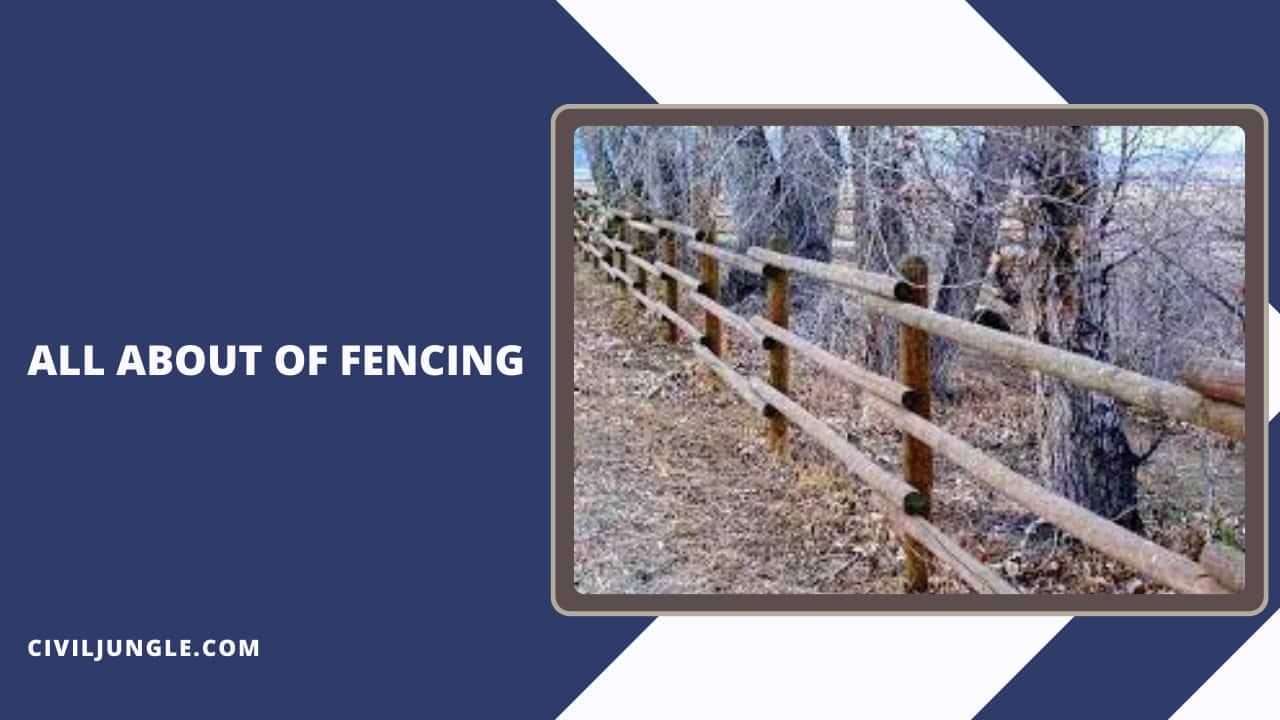
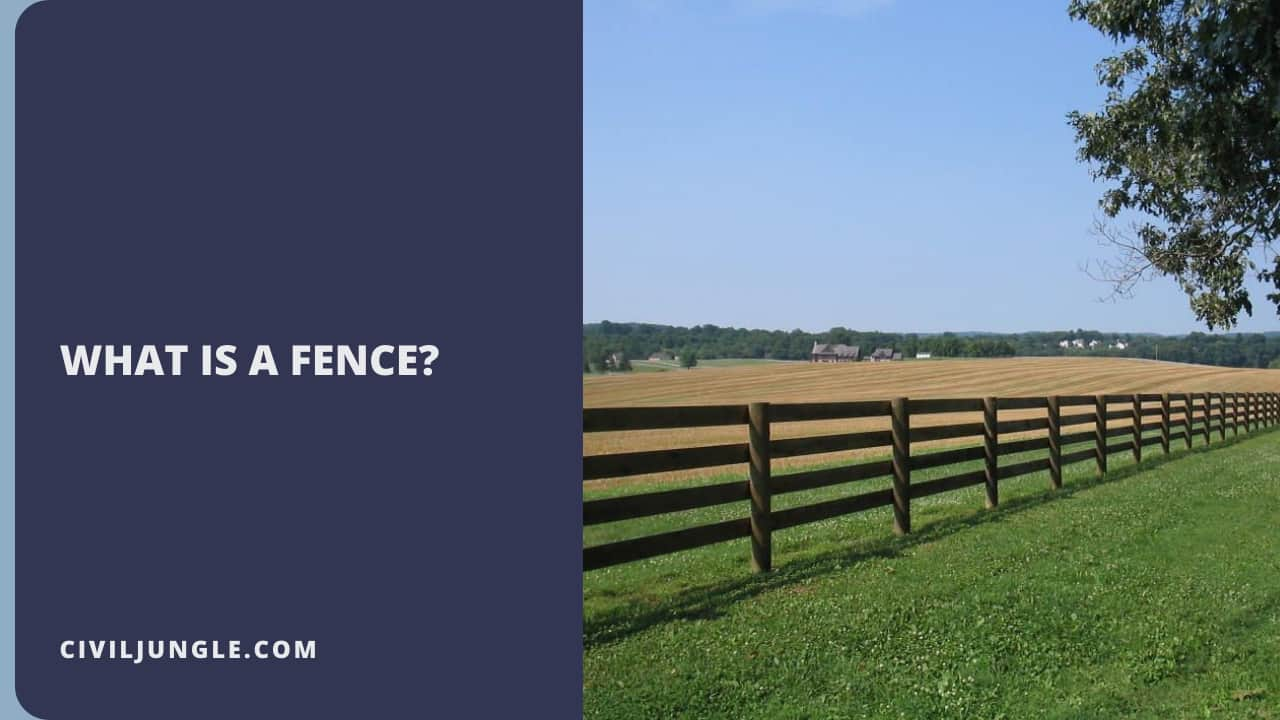
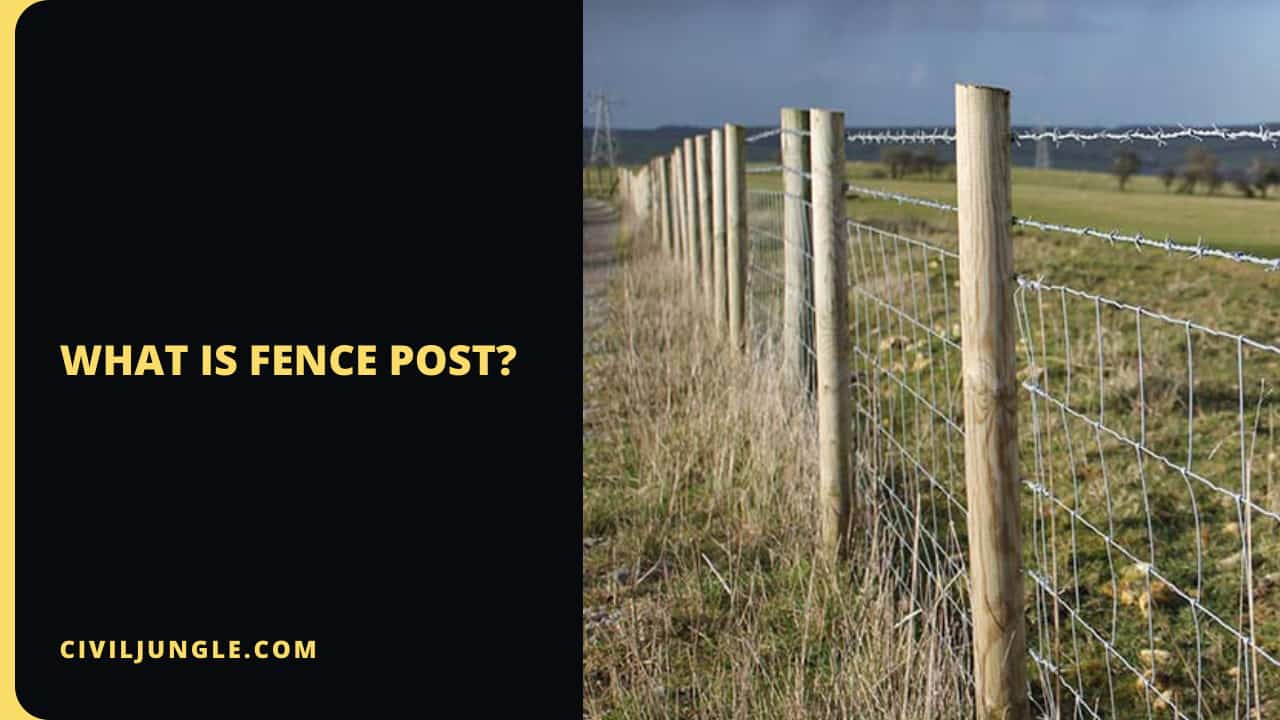
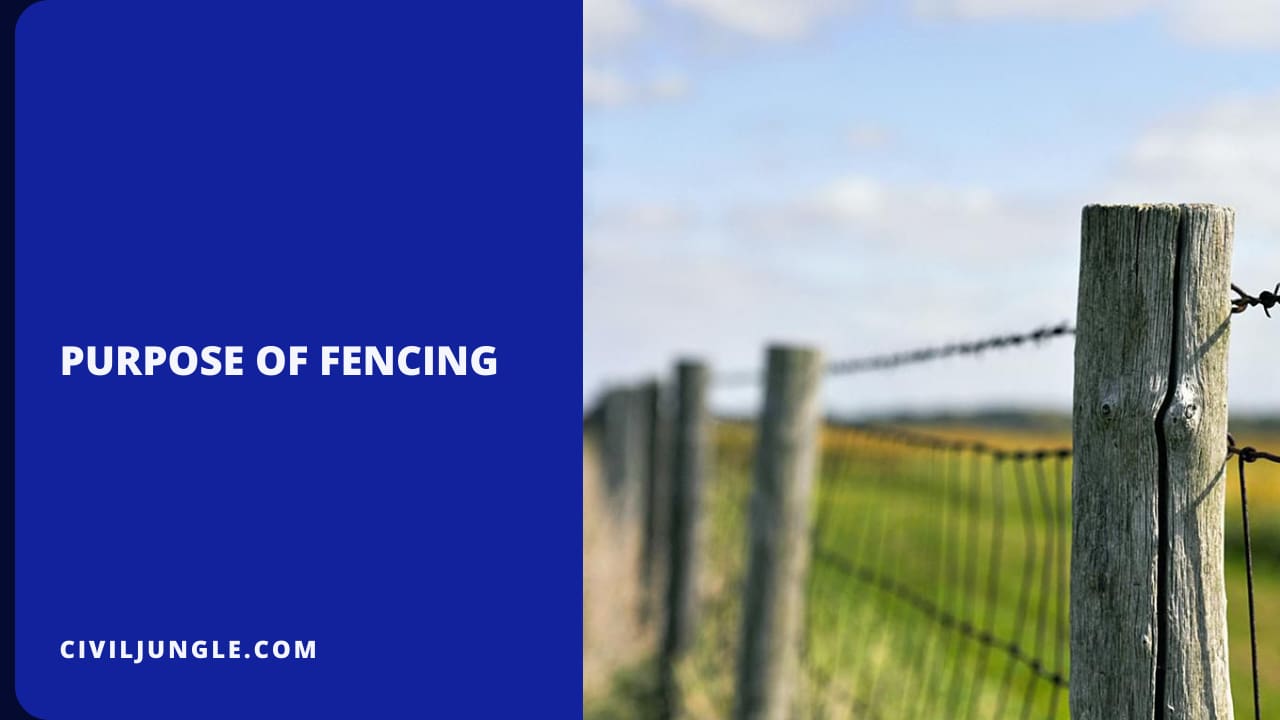

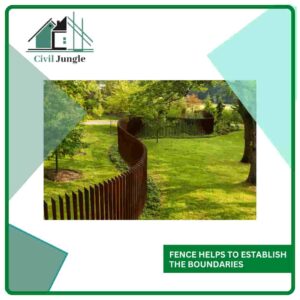

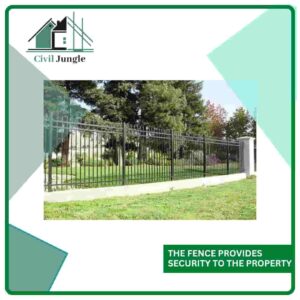

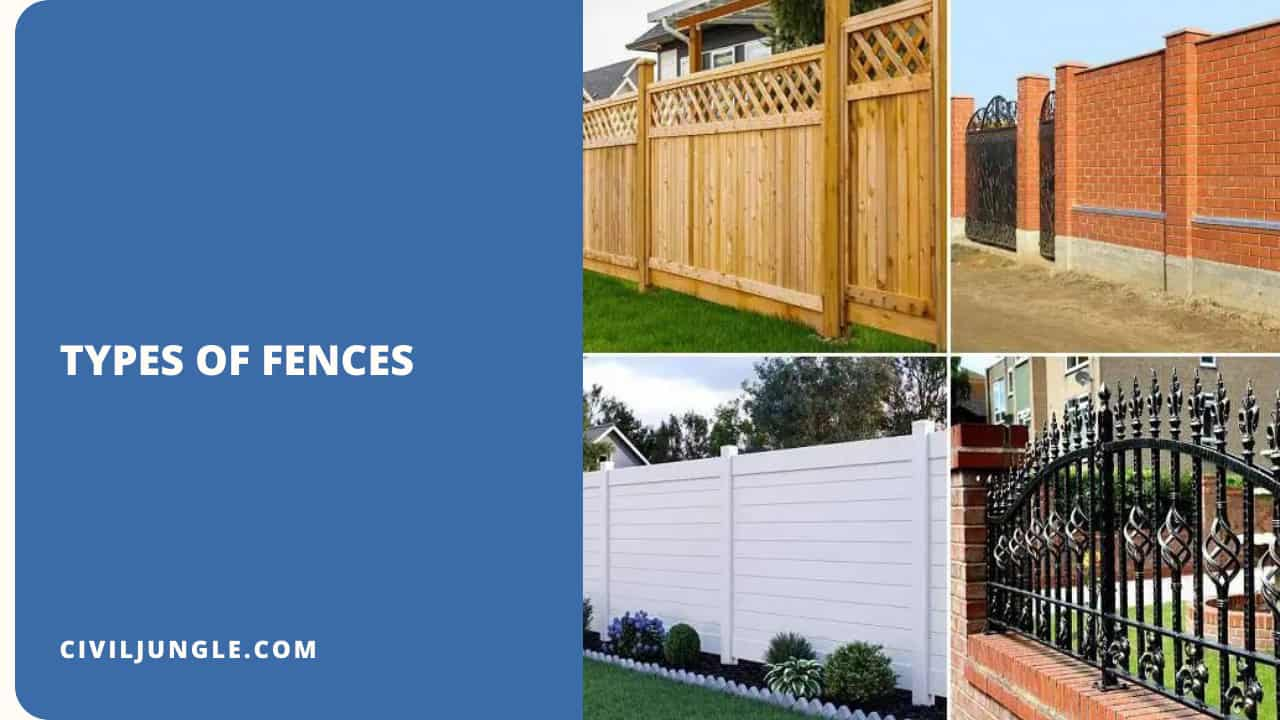
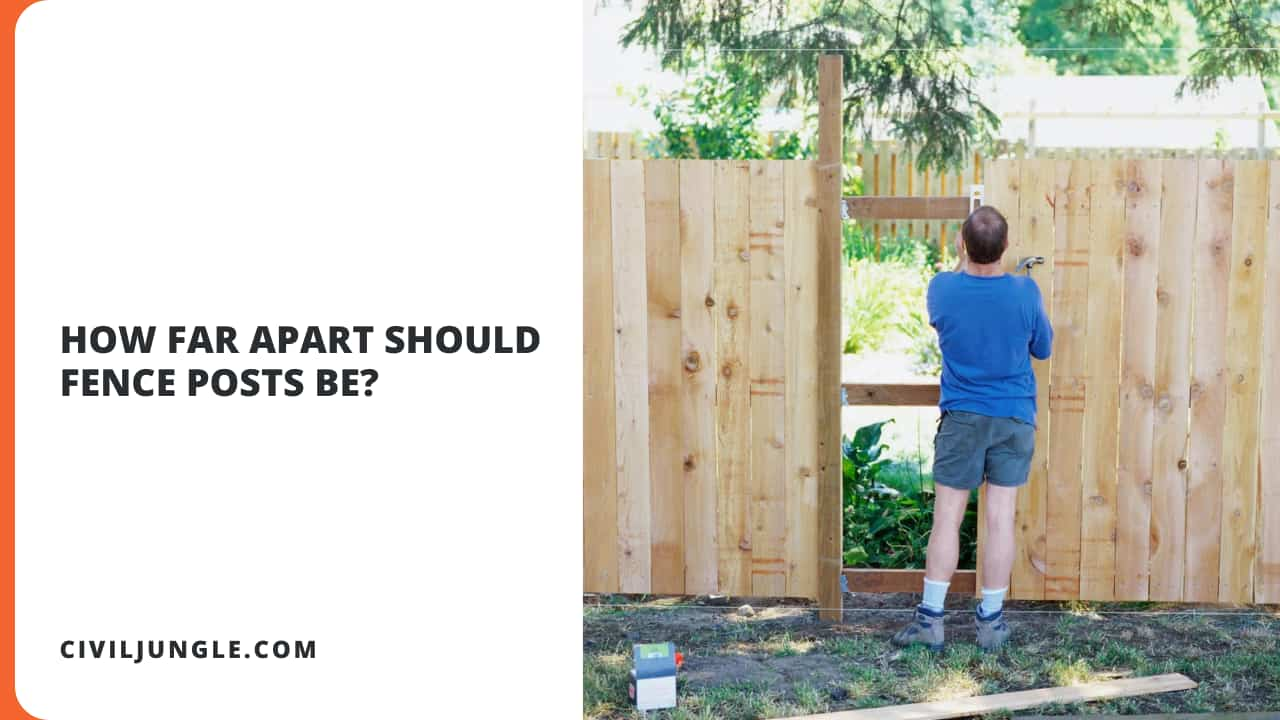
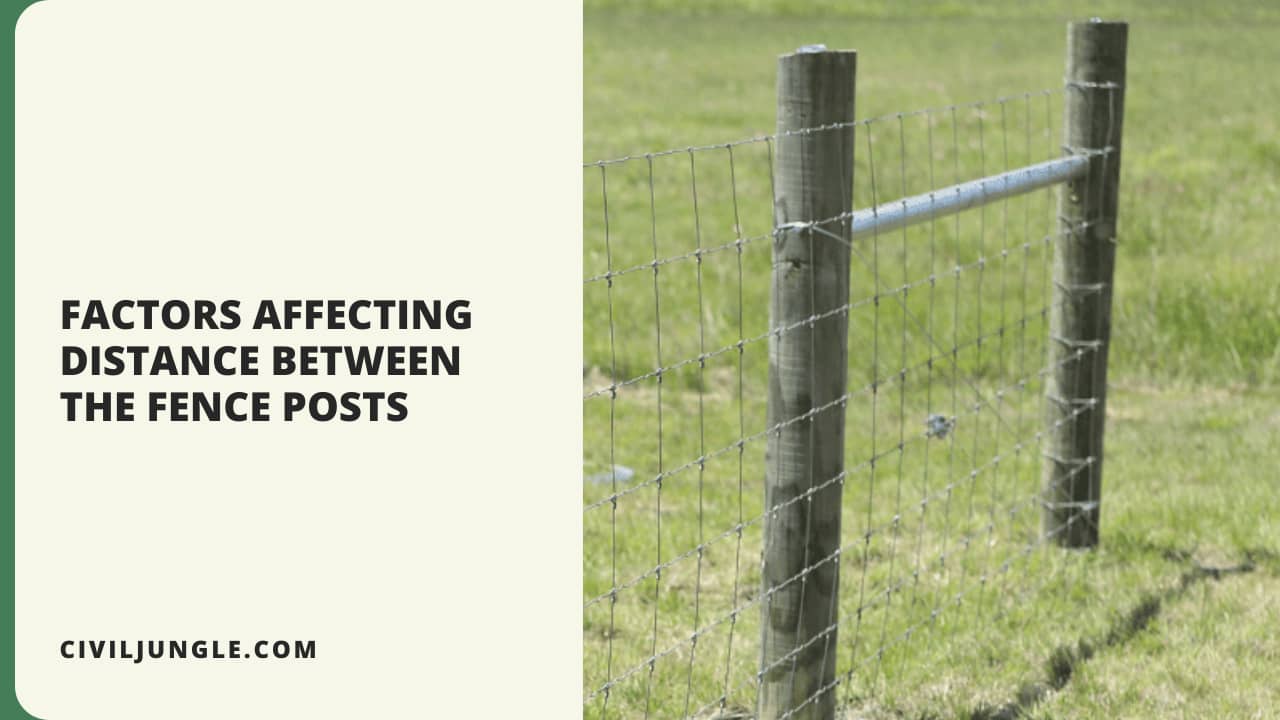

Leave a Reply